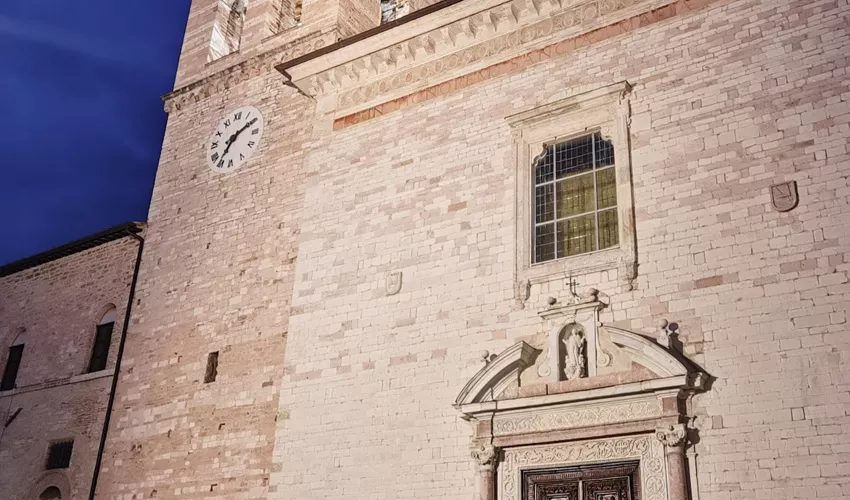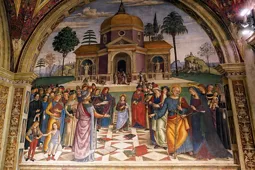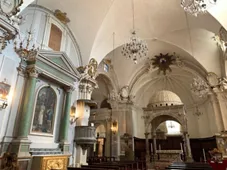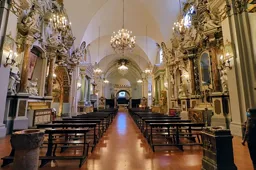



Overview
Founded in the first half of the 12th century, the church of S. Maria Maggiore has a façade dating back to 1644, created at the same time as the renovation of the building. Worthy of special mention are the architrave, the jambs with beautiful frieze and splendid acanthus spirals of the portal, the work of stone-cutters active over the centuries between Foligno and Bevagna and partly attributable to craftsmen from Spoleto. The church is in the shape of a Latin cross and comprises a cross-vaulted nave. In the second half of the 17th century, it was enriched with seven altars and rich stucco decoration. On the walls of the various altars, numerous works dating back to the 17th century can be admired.
To the right of the entrance, there is a marble altar by Gaius Titienus Flaccus (currently used as a stoup) that has been in St. Mary Major since the 15th century, next to a marble pyx-shaped baptistery by Gasparino da Val di Lugano (1509-1511). Along the left wall is, after the second altar on the left, the Baglioni Chapel, commissioned in 1500 by Troilo Baglioni to the artist Bernardino di Betto, better known as Pinturicchio (Perugia, around 1452 - Siena, 11 December 1513). The floor is decorated with Deruta majolica tiles dating back to 1566. The entire chapel is decorated with frescoes by the artist: on the vault the Sibyls Tiburtina, Eritrea, Europea, Samia seated on a throne, on the left wall an Annunciation with self-portrait and signature of the artist, on the back wall an Adoration of the Shepherds and the Arrival of the Magi, on the right wall a Dispute between the Doctors in the Temple. Also along the left wall is a Renaissance sandstone pulpit by Simone da Campione (1545).
The high altar is covered by a ciborium (or tribune) in caciolfa stone, the work of Rocco di Tommaso da Vicenza (1515). The tondi feature eight terracotta heads by Giandomenico da Carrara representing prophets (1562).
On the pillars flanking the apse are two works by Perugino: on the left 'Pieta, St John the Evangelist, and Mary Magdalene' and on the right 'Madonna and Child, St Catherine of Alexandria and St Blaise'. Both are from 1521 and their provenance is unknown.